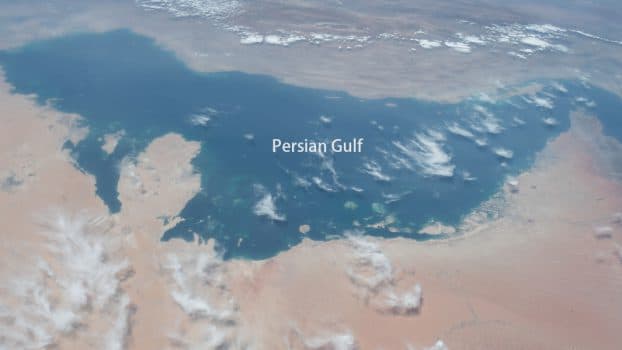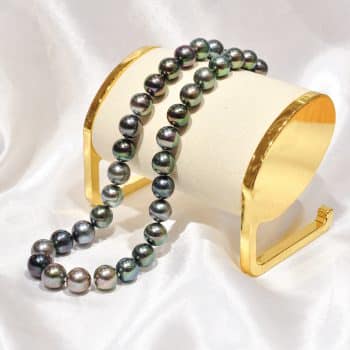
Officially the world’s oldest gem, pearls have been revered since long before written history. For this reason, their discovery cannot be attributed to one person in particular, but it is believed that they were first discovered by people searching for food along the seashore. We know that they have been worn as a form of adornment for millennia thanks to a fragment of pearl jewellery found in the sarcophagus of a Persian princess that dates back to 420 BC.
Pearls were presented as gifts to Chinese royalty as early as 2300 BC, while in ancient Rome, pearl jewellery was considered the ultimate status symbol. So precious were the spherical gems that in the 1st century BC, Julius Caesar passed a law limiting the wearing of pearls only to the ruling classes. The abundance of natural oyster beds in the Persian Gulf meant that pearls also carried great importance in Arab cultures, where legend stated that pearls were formed from dewdrops that were swallowed by oysters when they fell into the sea.
Before the advent of cultured pearls, the Persian Gulf was at the centre of the pearl trade and it was a source of wealth in the region long before the discovery of oil.


Pearls have been an important trade commodity since Roman times, and the discovery of pearls in Central and South America in the 15th and 16th century led to the so-called Pearl Age.
With the escalating demand for pearls in Western Europe, where ladies of nobility and royalty wore elaborate pearl necklaces, earrings, pearl bracelets and brooches, by the 19th century, demand for pearl jewellery became so high that oyster supplies began to dwindle.
Unlike gemstones that are mined from the earth, a living organism produces a pearl and, in fact, their very existence is a freak of nature. A pearl is formed when an irritant, such as a parasite or piece of shell, becomes accidentally lodged in an oyster’s soft inner body, causing it to secrete a crystalline substance called nacre, which builds up around the irritant in layers until a pearl is formed. Cultured pearls are formed through the same process, the only difference being that the irritant is implanted in the oyster rather than entering it by chance.
Today, natural pearls are among the rarest of gems and their almost entirely depleted supply means that they are found very infrequently only in the seas off Bahrain and Australia. The scarcity of natural pearls is reflected in the prices they fetch at auction, with antique pearl necklaces and earrings selling for record-breaking sums.
Pearls can be found, or cultivated, in freshwater or saltwater and there are several different types of pearls depending on what mollusc they originate from. Cultured freshwater pearls are produced mainly in China and, due to their abundance, they are more affordable than their saltwater cousins. Saltwater pearls include the Akoya which is from Japan, Paua pearls from New Zealand, as well as Tahitian pearls, which originate from Tahiti and other islands in French Polynesia. South Sea pearls hail from Australia, Indonesia and the Philippines. The latter is the largest of all the pearl varieties and come in white, cream or golden hues with sizes ranging from 9mm to 20mm. A Tahitian pearl is also known as a black pearl, although its colour spectrum also includes black, silver, and green.

Traditionally, pearls were celebrated for their uniformity in size and colour but now it seems the more avant-garde, the better. Pearls in vibrant colours and unusual shapes are being incorporated into unique jewels by jewellers renowned for their creativity.

